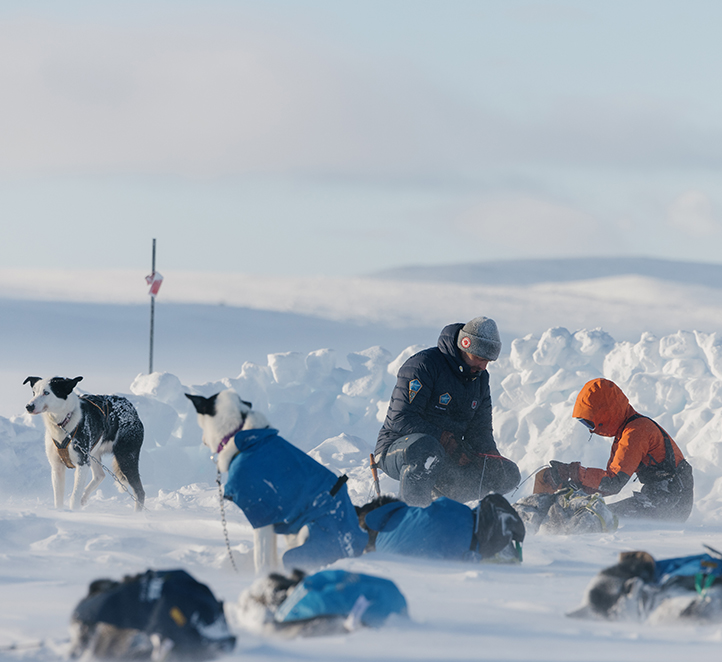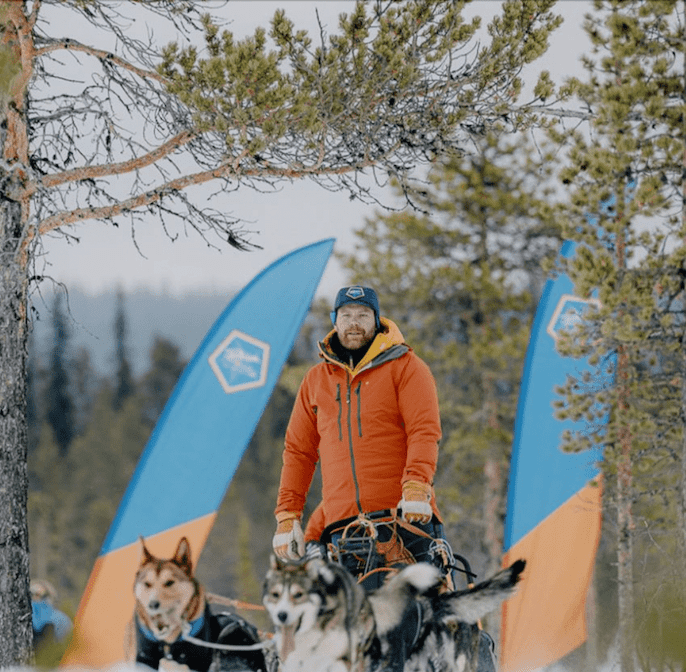How to dress for Arctic conditions
The classic winter layering system consists of three to four layers of garments and provides the warmth and protection needed from the elements. But how does this system adapt to environments above the Arctic Circle?

Let’s start with the basics
The base layer is designed to transport moisture away from the body. Wool is the ideal material as it keeps you warm even when damp.
The mid layer transports moisture away from the base layer while at the same time providing insulation, and the outer layer is a wind and water-resistant shell that keeps the cold out and the heat from the inner layers in. It should also be designed to release extra heat through side zippers for better moisture management.

Reinforcement layer
Reinforcement layers are put on while resting or when the body generates less heat. A down layer works well in this context as it retains body heat well when stationary. Pull-over garments should be roomy enough to easily put on over your other layers. Reinforcement layers should be stored near the top of your pack so they’re easily accessible when you stop or take a break.
Room to breathe
Winter garments should allow for good mobility and ventilation. But the air inside the garment is also a key ingredient when it comes to insulation, since air conducts the cold poorly. Clothing, gloves and shoes that fit too tightly have less space for air and therefore are not good insulators.
Hats
Headgear should vary, as your head is a great source for quickly regulating body heat. A balaclava, windproof hat or an insulated trekking cap with fold-down ear flaps are all good options. Keep any back-up hats in close reach so you can switch headgear when activities change.
Gloves
Even for conventional winter activities, you’d expect to bring a thinner, more dexterous pair of gloves, and a thicker, warmer pair. But for more extreme winter expeditions, you’ll first need a thin, five-fingered liner glove made of wool. The middle/outer layer consists of a five-fingered working glove with a removable wool liner. And finally, for long days on a dog sled, there’s a reinforcement layer – a large mitten that goes over the other gloves, which also comes with a removable wool liner.
Shoes
It’s crucial to pick the right size shoe. For dog sledding, expect to go two or three sizes bigger than your usual size. This extra room will enable the extra air to keep your feet well insulated. The shoes’ outer shell should include a membrane to keep moisture out, and they should contain a thick felted or knitted inner sole – the key source of insulation.
Socks
Your socks are just as important as your shoes. Use quality socks made from wool or a wool/synthetic blend. Bring several pairs and change your socks during the day for good moisture management. Hang the moist pair to dry in a warm place such as on the inside of your shell jacket. These little habits can make a huge difference.
Join the adventure of a lifetime

The life of a musher
Hear from lead musher, Aron Andersson, who reveals what life is like connecting, collaborating and living with his pack of Alaskan huskies. Read here

